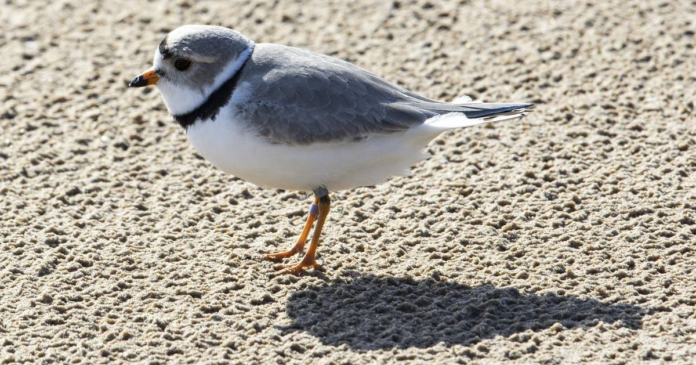Three endangered piping plovers — all barely a month old — were released Wednesday afternoon in a protected site at Montrose Beach, marking what volunteers say is the first time captive-reared chicks have been released in Chicago.
A Chicago Park District video shows a volunteer opening a pet carrier as the small birds flutter out, wasting no time in exploring their new home. Photos from lead volunteer coordinator Tamima Itani show the chicks sporting colorful bands on their legs, which experts use for identification.
Advertisement
“They came out, and they had this wonderful look on their faces,” Itani said. “They’re not shy. They’re not intimidated by the location or the novelty.”
Three endangered Piping Plovers were released into the wild at #MontroseBeach this afternoon with support from @USFWS, @IllinoisDNR & @ChicagoParks. The reared chicks will join Imani, our resident plover and call Chicago’s shoreline home. This is a 1st in Chicago. #PipingPlovers pic.twitter.com/Fhw754Egfy — Chicago ParkDistrict (@ChicagoParks) July 12, 2023
Searocket, Wild Indigo and Prickly Pear join local celebrity Imani, who calls the beach home and is protected by the U.S. Fish and Wildlife Service in collaboration with the Illinois Department of Natural Resources, the Park District and volunteers from the Chicago Ornithological Society, the Chicago Audubon Society and the Illinois Ornithological Society.
Advertisement
“For as long as they’re here,” Itani said, “we will be watching over them.”
The piping plovers will migrate south for the winter. “One of the things we know about captive-reared piping plovers is that 70% of them will come back to the location where they were released,” she added. “It gives us hope that next year some of them will come back to Montrose.”
The names of the chicks were inspired by the native plants of the Montrose Beach Dunes Natural Area, according to local birding and conservation organizations. Experts say it’s a sign of a healthy ecosystem when native plants like sea rockets, blue wild indigo and prickly pear cactuses are thriving.
[ How the ‘love story’ between Monty and Rose unfolded at Montrose Beach ]
So was the return of two Great Lakes piping plovers to the beach beginning in June 2019, when Monty and Rose — Imani’s parents — began nesting, their story of love and resilience capturing the hearts of countless Chicagoans. Monty died of a respiratory infection in 2022, just a month after Rose went missing.
Afternoon Briefing Weekdays Chicago Tribune editors’ top story picks, delivered to your inbox each afternoon. By submitting your email to receive this newsletter, you agree to our Subscriber Terms & Conditions and Privacy Policy >
The Great Lakes Audubon Society said recently that so far this summering season, the region has seen 80 pairs and 84 piping plover nests, with 61 active broods and nests. This is the most pairs since the species was at a low of 13 pairs in the 1980s, when they became federally endangered.
Montrose has chicks on the beach! Repeat: Chicks on the beach at Montrose!
We welcome your words of delirious joy! 🤍
P.S. Please remember to give Imani and the chicks their space. #chicago #birdwatching https://t.co/gsfvqEVCWC — Chicago Piping Plovers (@ChicagoPiping) July 12, 2023
Itani said two main factors led to the decision to release the three young plovers at Montrose.
“One of the factors is the desire to diversify and disperse the locations where the piping plovers are,” she said. “As their number increase, it is good to have additional sites where they nest.”
The second factor — a major one — was that Illinois has been very welcoming to the piping plovers and that the community support has been very strong. “Which is not the case everywhere,” Itani said.
Advertisement
At Montrose Beach, any visitors can look for the volunteer monitors wearing bright orange shirts, who can point out where the plovers are. But experts have reminded enthusiastic bird-watchers to give Imani and the new chicks some space.
“We ask people not to get close to the chicks. If the chicks happened to be at the public beach, they need to stay almost at a football field’s distance,” Itani said. “If people are trying to take photos with an iPhone, they’re too close.”
adperez@chicagotribune.com




